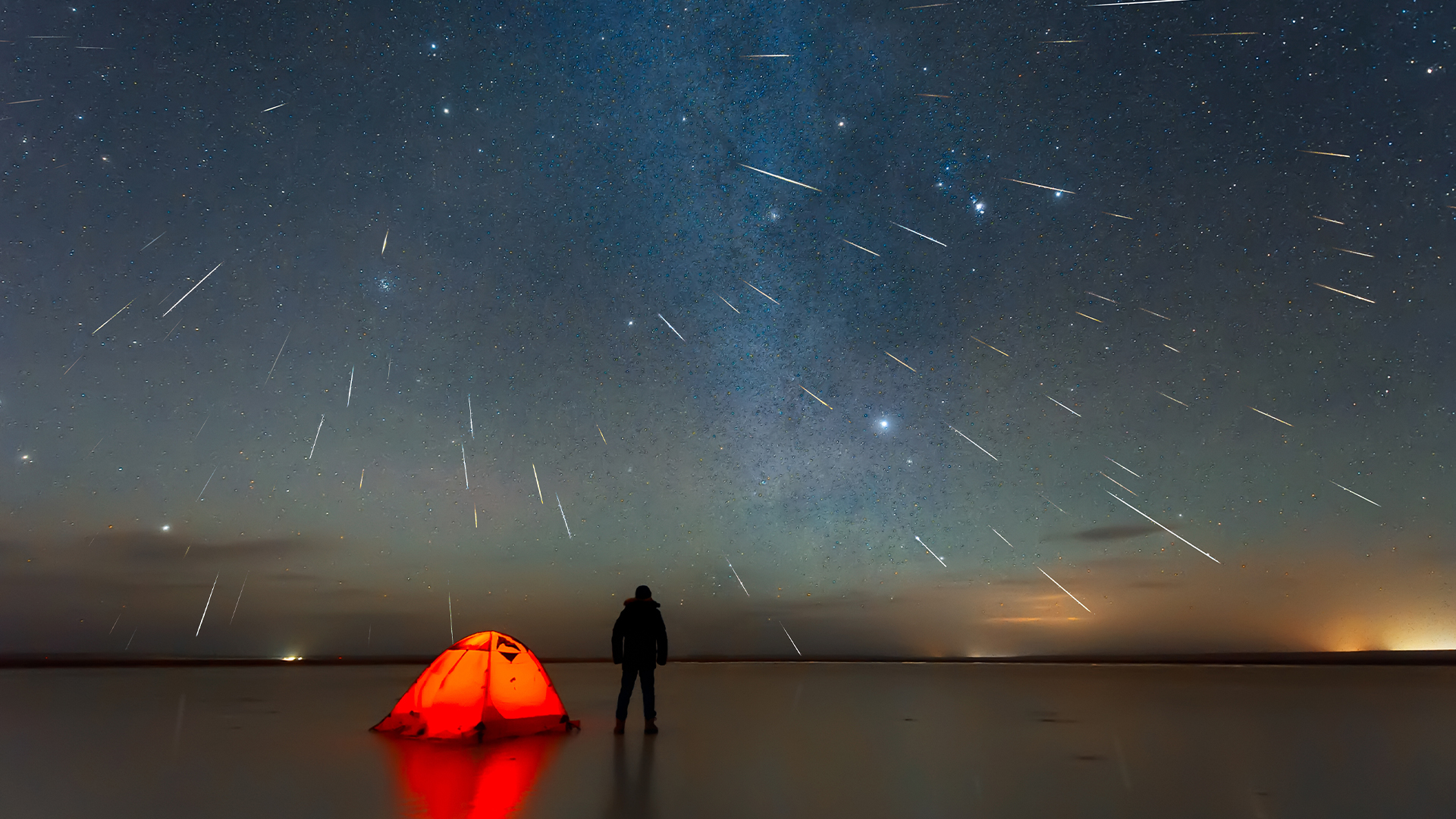When you purchase through links on our web site , we may earn an affiliate commission . Here ’s how it exercise .
The one-year Orionid meteoroid shower — a dusty consequence ofthe head trip Halley ’s comet shit around the sunevery 76 years , on average — will peak this week just as the famed configuration it ’s named after rises into the autumn sky .
Active from Sept. 26 through Nov. 22 , the Orionids will peak in the early hours of Monday , Oct. 21 , when around 23 " shoot virtuoso " are expect per hour , according to theAmerican Meteor Society . The exact peak is auspicate to fall out at 1 a.m. EDT ( 0500 GMT ) .

An Orionid meteor shoots through the Pigeon Point Lighthouse in Pescadero, California.
However , a waning gibbous moon will be in the sky for most of the night , provide less - than - ideal viewing condition . ( Thefull " Hunter ’s moon"rises days before , on Oct. 17 . ) fit in to theAmerican Meteor Society , the bright moonlight will " seriously halter " views of this display . Therefore , you belike wo n’t want to bother find dark skies to view this year ’s event . Rather , it may be more advantageous to watch the 2024 Orionids from home , where you could hope to see a in particular undimmed shot star .
According toNASA , the Orionids are one of the most beautiful showers of the year . These meteors are known for their brightness level and pep pill . The Orionids are fleet moving company , predicted to coin Earth ’s atmosphere at 41 miles per second ( 66 kilometers per arcsecond ) , or around 148,000 mph ( 238,000 kilometre / h ) .
Related : Halley ’s comet has begun its return journey to terra firma

Meteor showers are have by clouds of dust and rubble left in the innersolar systemby comets as they enter and leave to coil around the sun . As Earth fly through them , its atmospheric state strikes the material , stimulate shoot whizz .
— Can you see Earth ’s unexampled ' minimoon ' with the au naturel eye ?
— Space photo of the calendar week : Easter Island ’s last ' ringing of fire ' eclipse for 320 years

— scientist get wind bright ' sungrazer ' comet that could be visible with the nude eye this month — after Tsuchinshan – ATLAS
The Orionids are one of two annual meteor showers due to Halley’scomet , the only screw naked - eye comet that can theoretically be seen doubly in one human lifetime . Last in the internal solar system in 1986 and next due to chew the fat in 2061 , Halley ’s comet also causes theEta Aquarid meteoroid shower , which peaks in early May each year . Both shower can be image from both the Southern and northerly hemisphere .
Despite their far - off origin , the Orionids seem to come from a patch of sky close toBetelgeuse , a reddened giant star topology in the constellation Orion . The constellation is best live for Orion ’s Belt , which comprise three equally spaced stars : Alnitak , Alnilam and Mintaka . Also in the region are some of the bright virtuoso in the nighttime sky , such as Sirius , Rigel , Procyon and Capella . Hunter will reach its highest point in the sky around 2 a.m. in the Northern Hemisphere during the peak of the Orionids .














